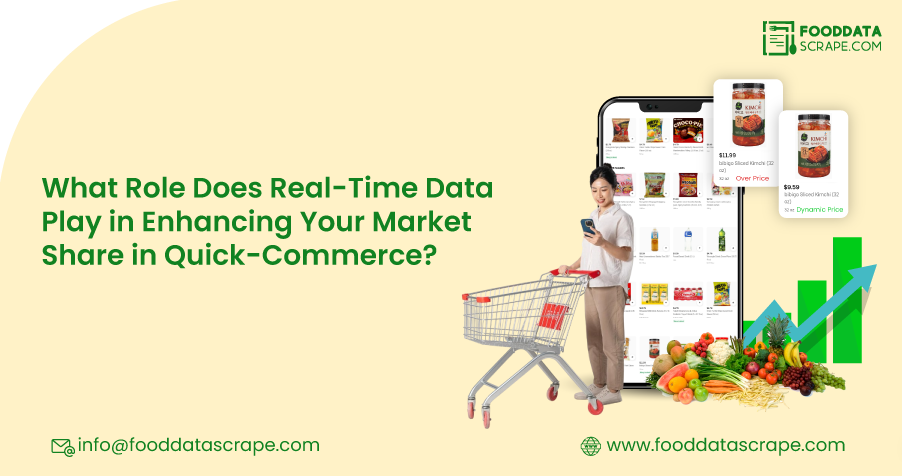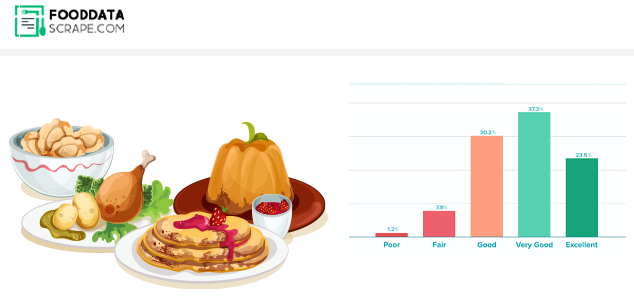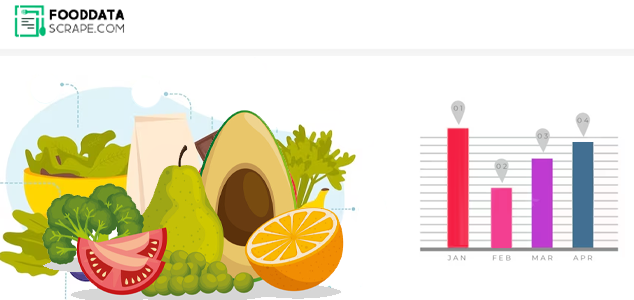Introduction
With speed and convenience driving the fast-paced Quick Commerce (Q-Commerce) world, visibility and getting noticed by the consumer are keys to growth and long-term market share. Share of market represents the proportion of total sales within a market covered by a business, whereas share of search depicts how frequently a brand or a product is being searched compared to its rivals.
For Quick Commerce companies, monitoring both search and market share is essential to understanding their visibility and position within the market. Real-Time Q-Commerce Data Intelligence enables companies to measure their success against competitors. In contrast, the share of search provides an early warning of likely sales, as a rise in search queries tends to accompany increasing demand. Tracking the share of search assists in forecasting consumer behavior shifts, identifying upcoming trends, and realigning marketing approaches accordingly. Pairing these two metrics gives Quick Commerce companies essential insights into their market position and future growth potential. A brand increasing its share of search is more likely to increase its market share, allowing companies to remain competitive by correlating product offerings and marketing with consumer demand. In addition, Scraping Q-Commerce Apps for Product Insights assists in collecting essential information regarding competitor products, prices, and promotions, thus making more informed decisions. Quick-Commerce Market Share Tracking gives companies insights into making informed adjustments and taking advantage of market opportunities.
Understanding Real-Time Q-Commerce Data Intelligence

Real-time Q-commerce data intelligence refers to the ability to gather, analyze, and act upon data instantly from multiple sources, such as customer interactions, product orders, inventory levels, and delivery times. Unlike traditional retail models that may rely on slower, aggregated data or periodic market reports, Q-commerce data intelligence is immediate and dynamic. It can capture consumer behavior, purchase preferences, stock availability, geographic location, and other vital aspects in real time, allowing businesses to adapt instantly. Grocery Price Tracking Dashboard enables businesses to stay on top of market trends and pricing shifts in real time, enhancing their ability to make informed decisions.
The emergence of Q-commerce companies like Zepto has amplified the need for robust data intelligence systems. Consumers now expect lightning-fast delivery, often within an hour of placing an order. This shift in consumer expectations has made real-time insights an advantage and a necessity for any business aiming to capture market share. With Grocery Pricing Data Intelligence, businesses can fine-tune their pricing strategies, ensure competitiveness, and meet customer demands with unprecedented accuracy.
How is Real-Time Data Scraping and Analysis Beneficial?
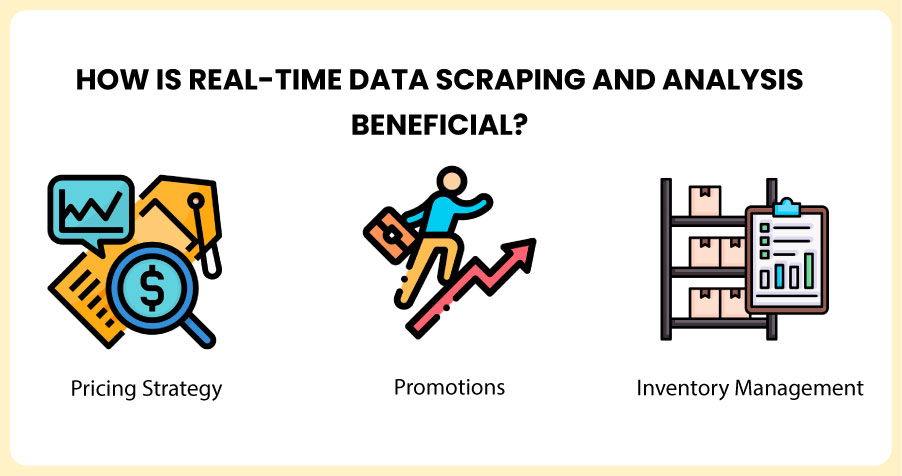
In the Quick Commerce sector, where rapid delivery and convenience are essential, businesses must be agile and responsive to dynamic consumer demands. Real-time data scraping and analysis provide the information needed to adjust pricing, optimize promotions, and streamline inventory management.
- Pricing Strategy: Real-time data scraping allows Quick Commerce businesses to monitor competitor pricing and adjust their prices accordingly. In an industry where price competition can be fierce, especially with customers expecting immediate gratification, staying competitive with dynamic pricing is essential. If competitors drop their prices or introduce discounts, businesses can instantly adapt to maintain their attractiveness to consumers. Additionally, real-time data analysis provides insights into price sensitivity, enabling Quick Commerce companies to fine-tune their pricing strategies based on customer behavior and market conditions. Scrape Real-Time Product Pricing for Quick-Commerce to stay competitive by providing up-to-date pricing information for immediate action.
- Promotions: The real-time nature of data scraping also aids in more effective timing of promotions. Quick Commerce businesses can identify peaks in consumer demand and plan promotions around these periods to maximize visibility and sales. For example, suppose a product is trending in social media conversations or receiving a surge in searches during specific times. In that case, businesses can leverage real-time data to create targeted, timely promotions that meet customer expectations and drive conversions. This data-driven approach helps businesses align their promotional strategies with real-time demand, ensuring better reach and customer engagement. Grocery App Data Scraping Services allow businesses to identify trends in consumer preferences, providing actionable insights for promotion planning.
- Inventory Management: Effective inventory management is critical in the Quick Commerce, where fast delivery is essential. Real-time data scraping enables businesses to track inventory levels across different platforms, monitor product demand, and predict upcoming trends. This ability allows Quick Commerce businesses to replenish stock on time, preventing stockouts and avoiding overstocking products that aren't selling. By analyzing real-time data, businesses can adjust their stock levels according to demand and market fluctuations, ensuring products are always available when consumers need them. Web Scraping Quick Commerce Data provides the insights needed to optimize stock management, ensuring a smooth and efficient inventory system.
Transform your business with real-time data intelligence—contact us now to elevate your Quick Commerce strategy!
Case Study: A Leading Quick Commerce Retailer Improved Their Market Share by 30% by Leveraging Real-Time Data
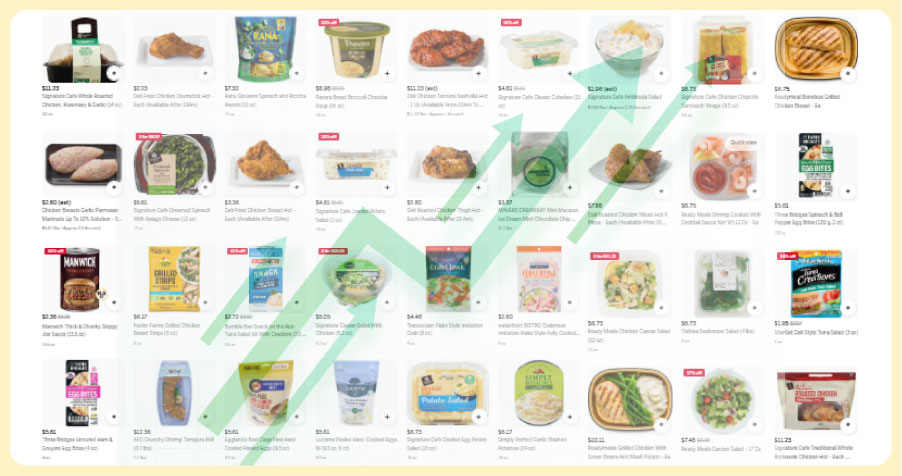
Let's explore a case study of a leading Quick Commerce retailer that leveraged real-time data scraping to optimize its market share. This retailer, operating in the ultra-competitive Quick Commerce industry, faced pricing, promotions, and inventory management challenges, impacting their growth potential.
The Challenge
Despite a solid product offering and loyal customers, the retailer struggled with stagnating growth. They faced fierce competition from other Quick Commerce providers, some of whom used aggressive pricing strategies. Additionally, the retailer's promotions were not yielding the expected results, and their inventory management practices led to frequent stockouts, hampering their ability to meet customer demands quickly.
The Solution
To address these challenges, the retailer adopted real-time data scraping to gather insights on competitor pricing, customer demand patterns, and the best times to run promotions. They implemented a system that continuously scraped competitor websites to track pricing trends and detect any fluctuations. With this real-time information, the retailer adjusted its pricing strategy to remain competitive while avoiding underpricing or overpricing. Real-time data also informed their promotional strategies, helping the retailer target their efforts opportunistically. By analyzing consumer behavior and demand patterns, they launched promotions during peak shopping periods, maximizing visibility and increasing customer engagement.
Finally, scraping data from inventory management systems allows the retailer to track product availability in real time and adjust orders based on anticipated demand. This ensured that popular items were never out of stock, enhancing their ability to meet consumer expectations for fast delivery.
The Results
By leveraging real-time data, the retailer increased its market share by 30%. It optimized its pricing strategy to remain competitive, timed its promotions to coincide with periods of high demand, and streamlined its inventory management. As a result, it captured a larger portion of the market, improved customer satisfaction by ensuring faster deliveries, and significantly boosted its sales.
This case study illustrates how Quick Commerce businesses can use real-time data to optimize pricing, promotions, and inventory management, ultimately improving market share and enhancing their competitive position.
How Food Data Scrape Can Help You?

- Instant Market Adaptation: Our scraping solutions enable you to rapidly capture real-time shifts in consumer behavior, allowing you to pivot your strategy instantly to stay ahead in the competitive Q-commerce space.
- Dynamic Pricing Precision: We provide in-depth pricing data, empowering you to adjust your pricing based on live market conditions, maximizing revenue without losing competitiveness in a fast-moving market.
- More Innovative Stock Management: Our advanced tools track product availability, predict future demand, and alert you to low stock levels, ensuring you're always prepared to meet customer expectations without excess inventory.
- Data-Driven Promotional Planning: Our solutions provide real-time insights on product trends and customer preferences, guiding you in creating personalized promotions at just the right time, amplifying customer engagement, and driving sales.
- Competitive Edge with In-Depth Analysis: Gain a detailed view of your competitors' strategies, including their pricing, product shifts, and promotional tactics. This will help you craft more informed, proactive approaches to outperform them in the marketplace.
Conclusion
In the Quick Commerce sector, businesses that can swiftly respond to consumer demand and competitor activity succeed. Grocery Delivery Scraping API Services provide Quick Commerce businesses with the tools to optimize pricing strategies, craft effective promotions, and manage inventory efficiently. By tracking market share and share of search, businesses can anticipate shifts in consumer behavior and adjust their strategies proactively.The leading Quick Commerce retailer's case study highlights the power of real-time data in driving growth and improving market share. As the Quick Commerce industry evolves, businesses that leverage real-time data intelligence will be better positioned to stay ahead of the competition and meet customer expectations for fast, convenient service. With the help of a Grocery Price Dashboard, businesses can track and adapt to pricing trends more effectively, ensuring their offerings stay competitive.
Are you in need of high-class scraping services? Food Data Scrape should be your first point of call. We are undoubtedly the best in Food Data Aggregator and Mobile Grocery App Scraping service and we render impeccable data insights and analytics for strategic decision-making. With a legacy of excellence as our backbone, we help companies become data-driven, fueling their development. Please take advantage of our tailored solutions that will add value to your business. Contact us today to unlock the value of your data.






















































































